The Real Hawai’i: Slow Travel on Molokaʻi and Lānaʻi
These two amazing islands have all the beauty of Hawaii’s busier destinations without the crowds. Nomad Will shares how to get there, inexpensive places to stay, and ways to experience authentic Hawaiian culture.
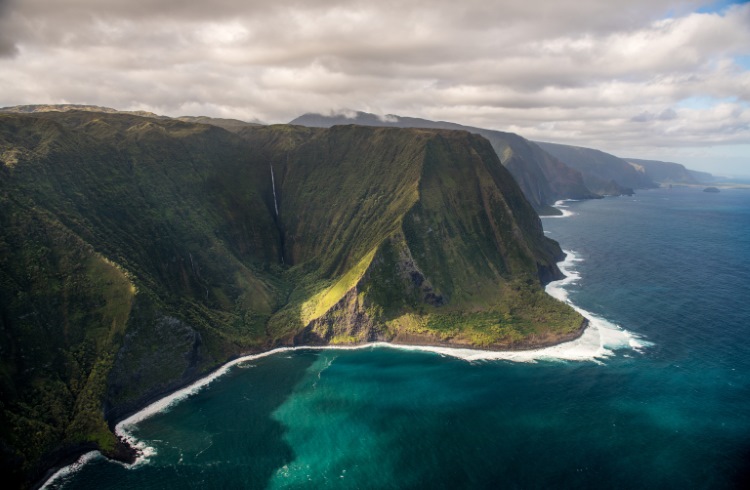 Photo © Getty Images / Archershoots
Photo © Getty Images / Archershoots
The first time I went to Molokaʻi, I drove out west to its most famous beach, Pāpōhaku. With more than three miles of golden sand, it’s one of the longest in the entire state, and on clear days, after dark, you can look across the ocean and see Oʻahu lit up in the distance, sparkling like a diamond.
For those reasons, I prepared myself mentally for the buzz and busyness that comes along with most of Hawaiʻi’s iconic places. I could barely believe it when I arrived and found that I had to squint to see the next person down the beach. I felt like I had discovered something. While everyone else was going right, I had gone left, it seemed.
Over the years, Molokaʻi, as well as its neighbor, Lānaʻi, have become my two favorite islands to tell (certain) people about for this exact reason – no one seems to go there. In 2022, Hawaii received nearly 10 million visitors, yet only about 1% of them went to Molokaʻi or Lānaʻi.
Why? Well, both can be a challenge to navigate. Lānaʻi is over-the-top expensive, which deters most, and Molokaʻi only has one hotel, which prevents most. But, knowing how to work around those obstacles opens up a set of adventures that few ever experience.
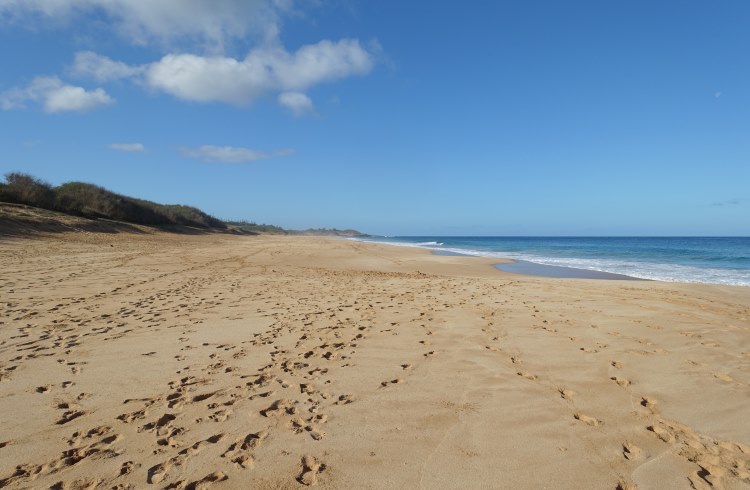
- Arrive via the last remaining ferry in Hawaiʻi
- Snorkeling from your campsite on Lānaʻi
- Volunteer on Molokaʻi and reap the rewards
Arrive via the last remaining ferry in Hawaiʻi
Today, many people will casually say that you can’t travel between the islands by boat anymore, but that’s not true. There is indeed an active ferry left in the islands, and it leaves from Lāhainā on Maui and goes to Lānaʻi ($30 each way; 1 hour trip). (Note: Due to the Lāhainā fire in August 2023, the Lāhainā to Lānaʻi route has been suspended but there are departures from Maʻalaea Harbor on Maui.)
Infrequently used by tourists, the ferry sets you up nicely – it's cheaper and more interesting than flying, and it doubles as a scenic tour. Shoving off from Maui, you get spectacular views looking back on the island’s two volcanoes, and whales, dolphins, and other sea life are often encountered along the way. Crossing the channel from Maui to Lānaʻi is an old-school way to visit an old-school island.
Snorkeling from your campsite on Lānaʻi
The irony that only about 1% of people visit Lānaʻi is that its tiny tourism game is built around attracting the top 1%. Lānaʻi has three hotels – two of which are Four Seasons – and it’s not unusual to see rates that trend upwards of $1,000 a night.
Yikes. My initial trips to Lānaʻi were funded by work, so when it came time to visit on my own dollar, I knew I had to get creative. The key to my success was noting that the island’s only campground was just steps away from the ferry landing.
To this day, the $60-per-night campsite at Hulopoʻe Beach Park is still the most expensive I’ve ever booked (with additional charges for additional people). But as far as Lānaʻi goes, this is dirt cheap, and the fact that you can bring a cooler full of groceries on the ferry sweetens the deal. Otherwise, all you need is some basic camping gear, which I recommend bringing from home. Consider it a backpacking trip where you don’t have to hike. (Note: as of November 2023 the campsite is open to Lānaʻi residents only.)
From Maui (Lāhainā), I took the evening ferry to Lānaʻi and arrived at the Manele Small Boat Harbor about a half hour before sunset. It was a short stroll to the campground, my site within steps of the ocean and the white sand of Hulopoʻe Beach. There’s a nearby trail atop the cliffs to the overlook of Puʻu Pehe, a towering formation better known as Sweetheart Rock. I sat, drinking a beer, listening to the waves crash, watching the cliffs glow red and the pink, purple, and orange sky fade into twilight. Across the way I could see the top of Haleakalā on Maui, and that night, I cooked dinner with my feet in the sand.
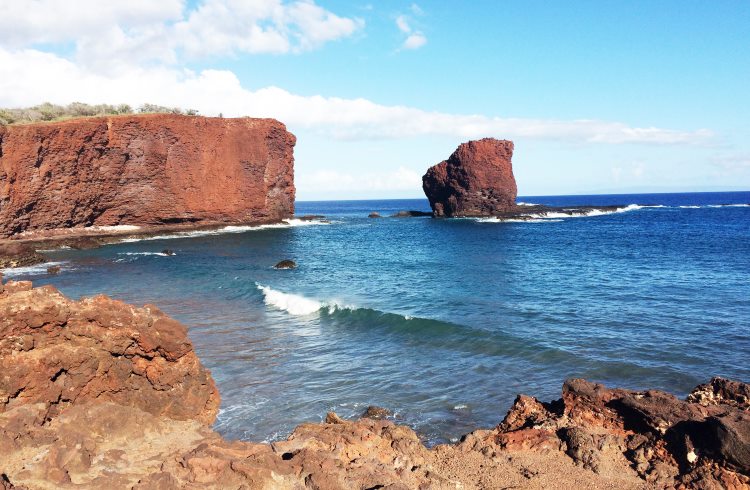
The next morning at sunrise, I donned my snorkel gear (bring your own or rent on Maui) and explored the Manele-Hulopoʻe Marine Life Conservation District, which sits just offshore. Snorkel boats come here from Maui in the late morning and early afternoon, but go at dawn and you’ll have the crystal-clear, turquoise-blue water – filled with sea turtles, tropical fish, eels, and coral heads – all to yourself.
If you want to explore beyond the south shore, you can rent a car or hire a taxi at the harbor to Lānaʻi City for the afternoon. Renting an off-road Jeep and exploring Lānaʻi’s many dirt roads is also a worthy adventure, although the Jeeps can cost up to $200 a day.
Volunteer on Molokaʻi and reap the rewards
Molokaʻi is a wonderful place to visit because of how uncrowded, undeveloped, and, thus, how unspoiled it remains. I could set you up by pointing you in the direction of the campsites at Pāpōhaku, the cultural hike in Hālawa Valley, or the historical tour at Kalaupapa.
But, as I found out, if you want to dig deeper on Molokaʻi, you’re going to have to get your hands dirty. You’re going to have to volunteer somewhere.
I can feel you rolling your eyes. Volunteer? On my vacation? I know, it sounds like a total drag. But if you want the real Molokaʻi, that’s the only way to get it.
The discovery came organically for me. One day, while hanging about a beach, I noticed a group of locals coming my way, collecting trash that had washed onshore. I happened to strike up a conversation as they passed, and before I knew it, I had a bag in my hand. We walked the beach collecting bits of microplastic, getting to know one another. When one man learned that I was from out of town, he insisted I come over for dinner. That night, I sat outside at a picnic table on his family farm, eating kalua pork, listening to the entire family sing songs in a tradition known as kanikapila. I felt extremely out of place, which told me I was on the right track.
Before I left, they circled some unmarked places on the map for me, and gave me the names of some of their friends on the island. The next day, because of their introduction, I joined the owner of the local bike shop on his evening ride. I couldn’t wipe the smile off my face. Whereas before I had been limited to observing the island’s beaches and landscapes, I was now plugged into its people.
When I asked why these places and experiences weren’t more openly marketed, they explained that this is how things work on Molokaʻi. For locals, tourism is not a financial transaction, and its places are not for sale. Rather, tourism here is striving to be a people-to-people exchange, a process that’s mutually beneficial.
Now, before you go around the island performing random acts of kindness and fishing for invitations, know that today’s voluntourism industry is more organized. For example, the Halawa Tropical Flower Farm offers free overnight lodging for a half day of help, and volunteers at the Mokio Preserve receive access to otherwise restricted lands.
The Molokaʻi Tourism Office is actively promoting these exchanges and works to find the best host for your interests – just give them a call and see where it leads you. Worst case, if you don’t like it, you can still head to Pāpōhaku and take a few photos. There will be room for you there, and no one will bug you, that I can guarantee.
Note: As of November 2023, Hawaiian Airlines is not offering flights to Molokaʻi and Lānaʻi. However, Mokulele Airlines operates flights to those islands.
Related articles
Simple and flexible travel insurance
You can buy at home or while traveling, and claim online from anywhere in the world. With 150+ adventure activities covered and 24/7 emergency assistance.
Get a quote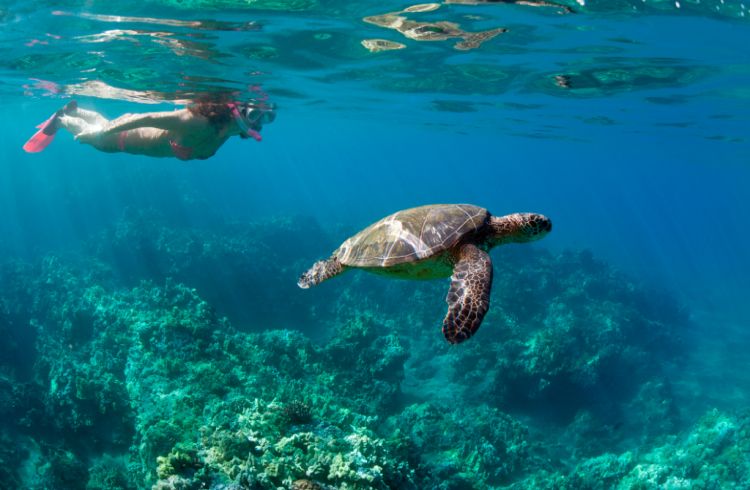

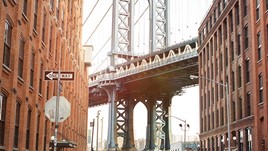
No Comments